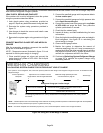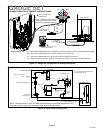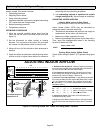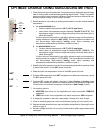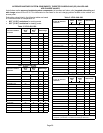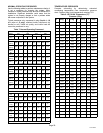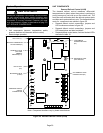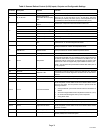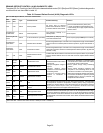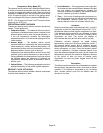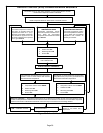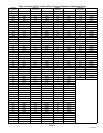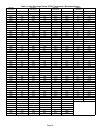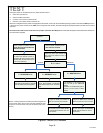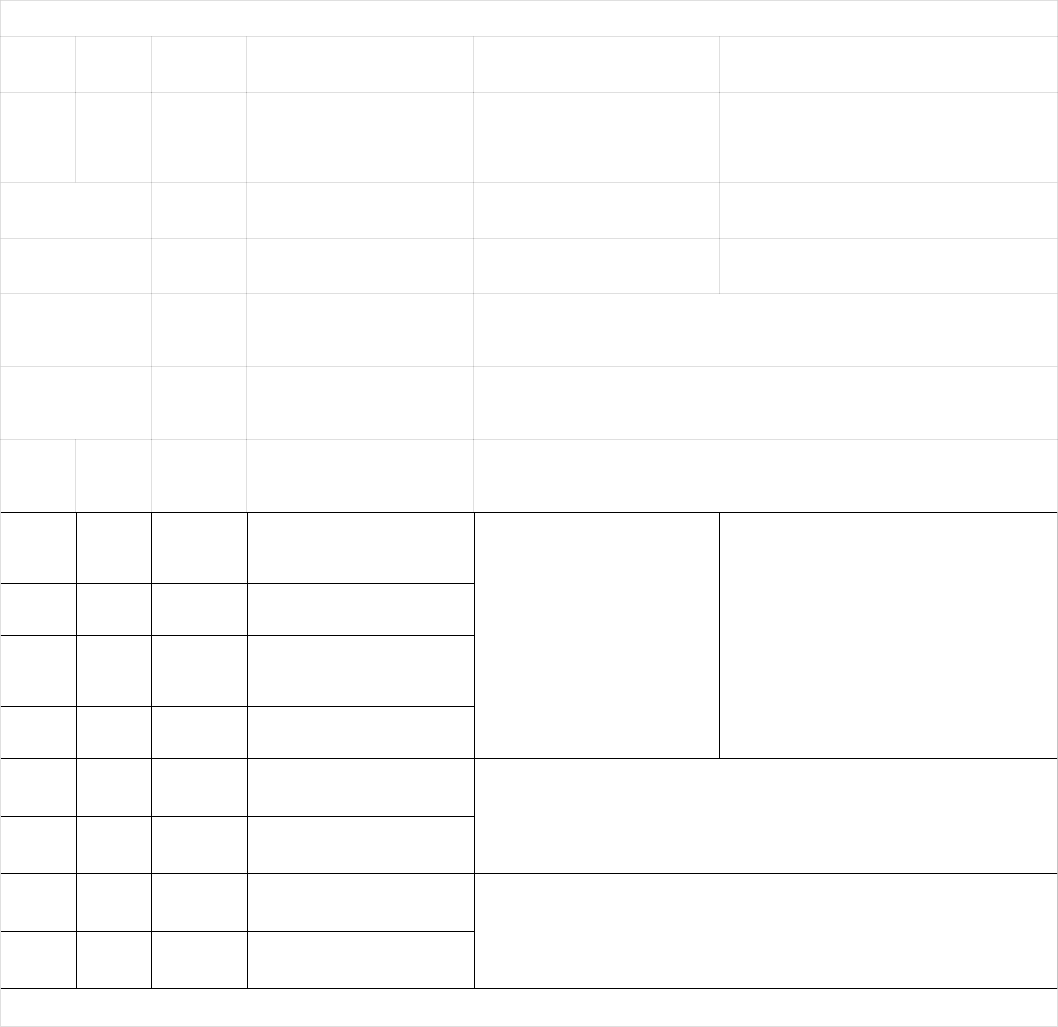
Page 32
DEMAND DEFROST CONTROL (A108) DIAGNOSTIC LEDS
The state (Off, On, Flashing) of two LEDs on the demand defrost control (DS1 [Red] and DS2 [Green]) indicate diagnostics
conditions that are described in table 10.
Table 10. Demand Defrost Control (A108) Diagnostic LEDs
DS1 and DS2 System Status, Fault and Lockout Codes
DS2
Green
DS1
Red
Type
Condition/Code Possible Cause(s) Solution
OFF OFF Status Power problem
No power (24V) to demand
defrost control terminals R and C
or demand defrost control failure.
1
Check control transformer power (24V).
2
If power is available to demand defrost con-
trol and LED(s) do not light, replace demand
defrost control.
Simultaneous
SLOW Flash
Status Normal operation
Unit operating normally or in
standby mode.
None required.
Alternating SLOW
Flash
Status 5−minute anti−short cycle delay
Initial power up, safety trip, end of
room thermostat demand.
None required (jumper TEST pins to override)
Simultaneous
FAST Flash
Fault Ambient Sensor Problem
Sensor being detected open or shorted or out of temperature range. Demand defrost
control will revert to time/temperature defrost operation. (System will still heat or
cool).
Alternating
FAST Flash
Fault Coil Sensor Problem
Sensor being detected open or shorted or out of temperature range. Demand defrost
control will not perform demand or time/temperature defrost operation. (System will
still heat or cool).
ON ON Fault
Demand Defrost Control
Failure
Indicates that demand defrost control has internal component failure. Cycle 24VAC
power to demand defrost control. If code does not clear, replace demand defrost
control.
OFF
SLOW
Flash
Fault Low Pressure Fault
1
Restricted air flow over indoor or
outdoor coil.
2
Improper refrigerant charge in
system.
3
Improper metering device
installed or incorrect operation
of metering device.
4
Incorrect or improper sensor
location or connection to
system.
1
Remove any blockages or restrictions from
coils and/or fans. Check indoor and outdoor
fan motor for proper current draws.
2
Check system charge using subcooling
method.
3
Check system operating pressures and
compare to unit subcooling tables in this
instruction or located on unit access panel.
4
Make sure all pressure switches and sensors
have secure connections to system to prevent
refrigerant leaks or errors in pressure and
temperature measurements.
OFF ON Lockout Low Pressure Lockout
SLOW
Flash
OFF Fault High Pressure Fault
ON OFF Lockout High Pressure Lockout
SLOW
Flash
ON Fault
Discharge Line Temperature
Fault
This code detects shorted sensor or high discharge temperatures. If the discharge
line temperature exceeds a temperature of 285ºF (140ºC) during compressor
operation, the demand defrost control will de−energize the compressor contactor
output (and the defrost output if active). The compressor will remain off until the
discharge temperature has dropped below 225ºF (107ºC).
FAST
Flash
ON Lockout
Discharge Line Temperature
Lockout
OFF
Fast
Flash
Fault Discharge Sensor Fault
The demand defrost control detects open sensor or out of temperature sensor range.
This fault is detected by allowing the unit to run for 90 seconds before checking
sensor resistance. If the sensor resistance is not within range after 90 seconds, the
demand defrost control will count one fault. After 5 faults, the demand defrost control
will lockout.
Fast
Flash
OFF Lockout
Discharge Sensor Lockout
(Each fault adds 1 strike to that code’s counter; 5 strikes per code = LOCKOUT)



